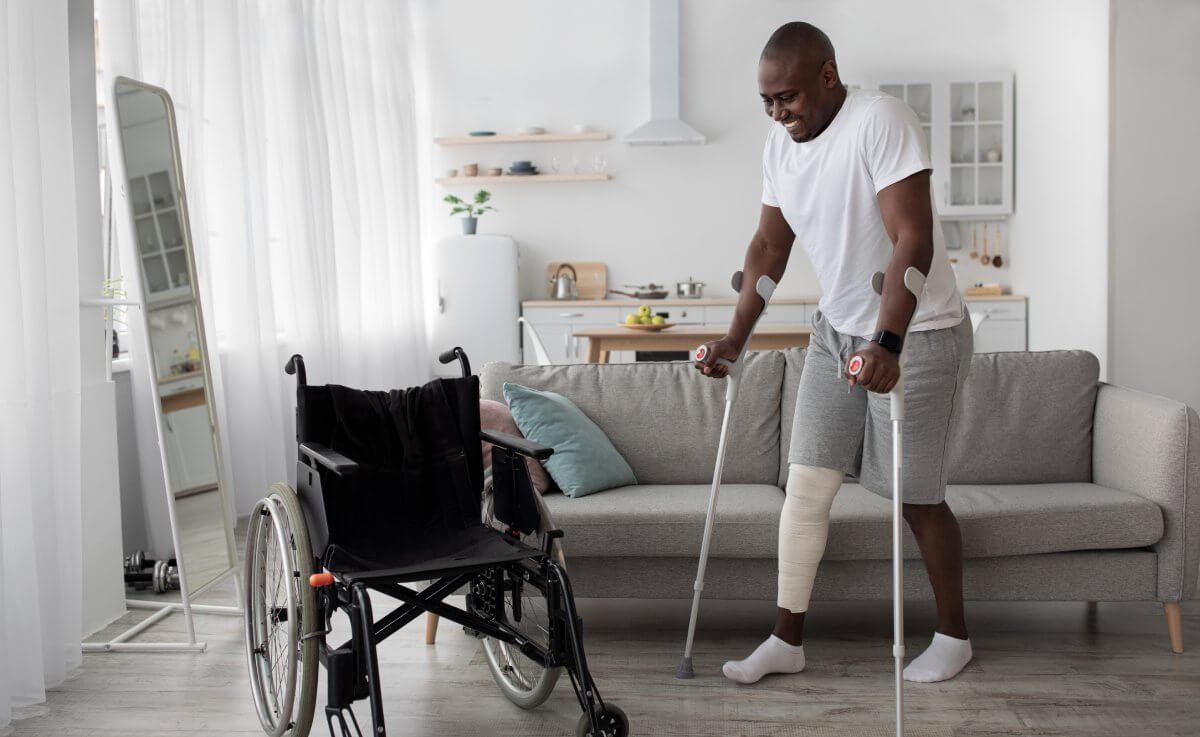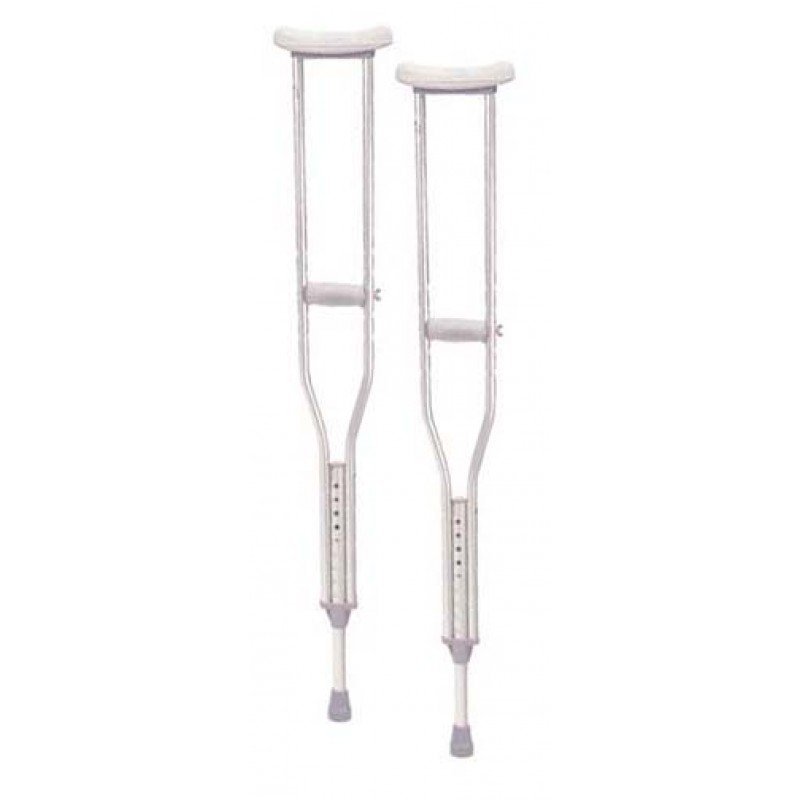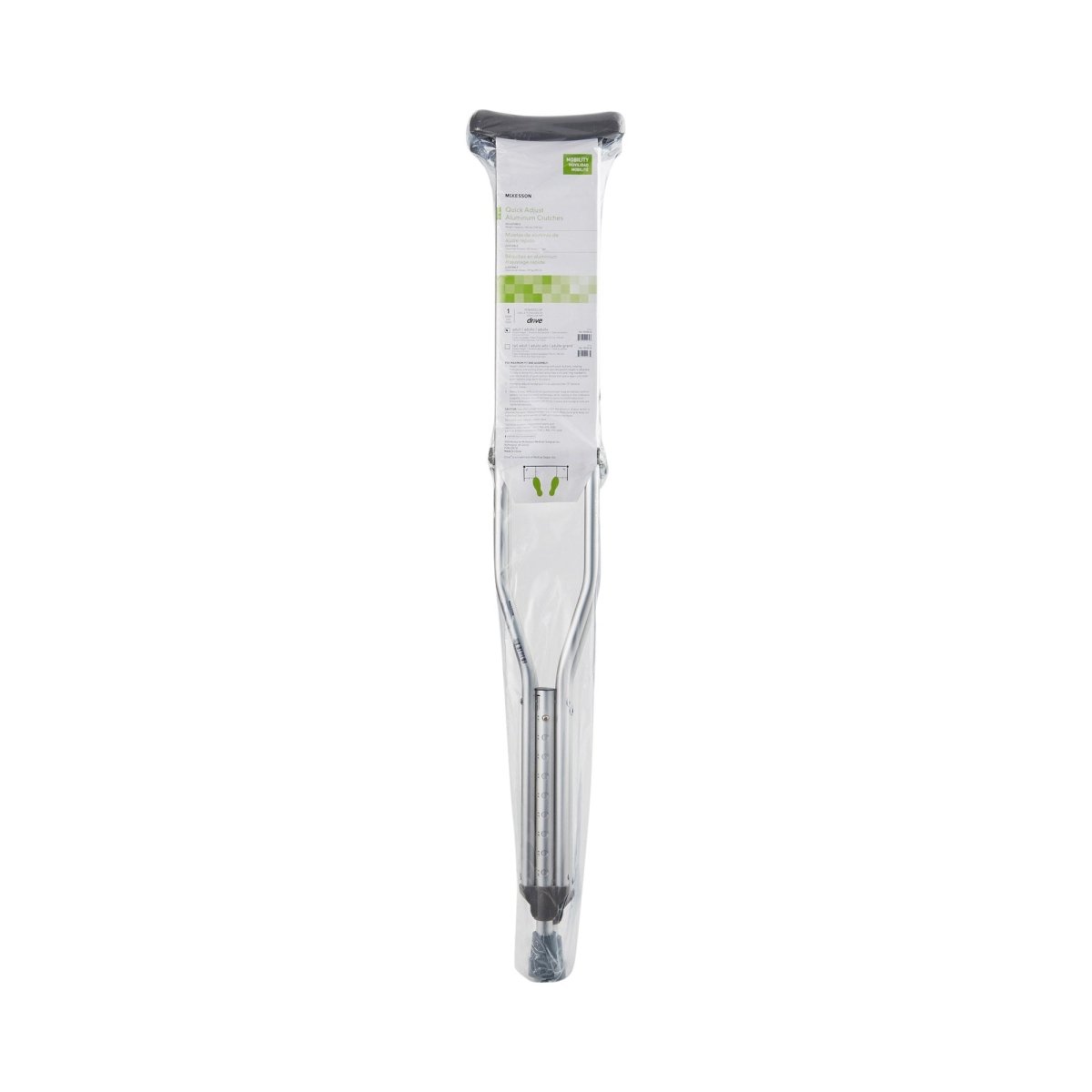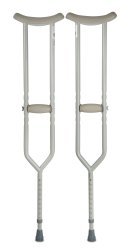Table of Contents
Introduction
Undergoing knee surgery can be a challenging experience, but with the proper knowledge and techniques, the recovery process can be made easier. One essential aspect of post-knee surgery recovery is learning how to use crutches effectively. Crutches provide support and assist in maintaining balance and mobility while allowing the injured knee to heal. In this article, we will provide you with a comprehensive guide on how to use crutches after knee surgery, ensuring a smooth and safe recovery.

Preparing for the Use of Crutches
Before you start using crutches, it's important to make necessary preparations to ensure a comfortable and efficient experience.
Gathering the Necessary Equipment
To begin, gather the following equipment:
- Crutches: Choose crutches that are appropriate for your height and weight. Options include axillary (underarm) crutches or forearm crutches.
- Comfortable footwear: Opt for supportive shoes with a non-slip sole.
- Padding and cushioning: Consider using padding or cushioning to reduce discomfort and prevent chafing.
Adjusting the Crutches to Your Height
Proper adjustment of the crutches is crucial for maintaining stability and preventing unnecessary strain on your body. Follow these steps to adjust the crutches to your height:
- Stand upright with your shoes on.
- The top of the crutches should be approximately 1-2 inches below your armpits.
- The handgrips should be at the level of your hips.
- Adjust the length of the crutches accordingly, ensuring they are secure.
Learning the Proper Technique
Using crutches requires a specific technique to ensure safe movement and minimize discomfort. Follow these steps to learn the proper technique:
Getting in Position
- Stand upright with your weight evenly distributed between the crutches and your unaffected leg.
- Place the crutches slightly in front of you, about 1 foot apart.
- Keep your injured leg off the ground and slightly elevated.
Taking the First Steps
- Move the crutches forward, keeping them stable on the ground.
- Step forward with your unaffected leg, landing on your heel first.
- Use your arms and hands for support while transferring weight from the crutches to your unaffected leg.
- Repeat the process, taking small, controlled steps.
Maintaining Balance and Stability
Maintaining balance and stability is crucial when using crutches. Here are some important tips to help you:
Keeping Your Body Upright
- Stand tall and keep your back straight.
- Avoid leaning on the crutches excessively.
Distributing Weight Evenly
- Divide your weight evenly between the crutches and your unaffected leg.
- Avoid putting weight on your injured leg unless instructed by your doctor.
Going Up and Down Stairs
- To go up stairs, lead with your unaffected leg and bring the crutches with you.
- To go down stairs, place the crutches on the lower step first, followed by your affected leg.
Managing Discomfort and Fatigue
Using crutches for an extended period can lead to discomfort and fatigue. Follow these tips to manage these challenges:
Using Padding and Cushioning
- Place padding or cushioning on the underarm areas of the crutches to reduce pressure and discomfort.
- Consider using padded covers for the handgrips to minimize hand fatigue.
Taking Breaks and Resting
- Take short breaks to rest and relieve pressure on your arms, shoulders, and hands.
- Use a chair or stool for support when resting.
Maintaining Mobility and Independence
While using crutches, it's important to maintain mobility and independence. Here are some strategies to help you:
Navigating Small Spaces
- Practice turning sideways to maneuver through narrow spaces.
- Open doors with your free hand or ask for assistance if needed.
Performing Daily Activities
- Adapt your daily activities to accommodate the use of crutches.
- Use a backpack or a bag with a strap to carry items hands-free.
Utilizing Assistive Devices
- Consider using assistive devices such as a knee scooter or a wheelchair for longer distances or when you need a break from crutches.
Gradual Transition to Walking without Crutches
As your recovery progresses, you may gradually transition from using crutches to walking without assistance. It's important to consult your doctor or physical therapist for guidance on when and how to make this transition safely.
Conclusion
Learning how to use crutches after knee surgery is essential for a successful recovery. By following the proper techniques and taking necessary precautions, you can maintain mobility, reduce discomfort, and regain independence throughout the healing process. Remember to consult your healthcare provider for personalized guidance and support.












